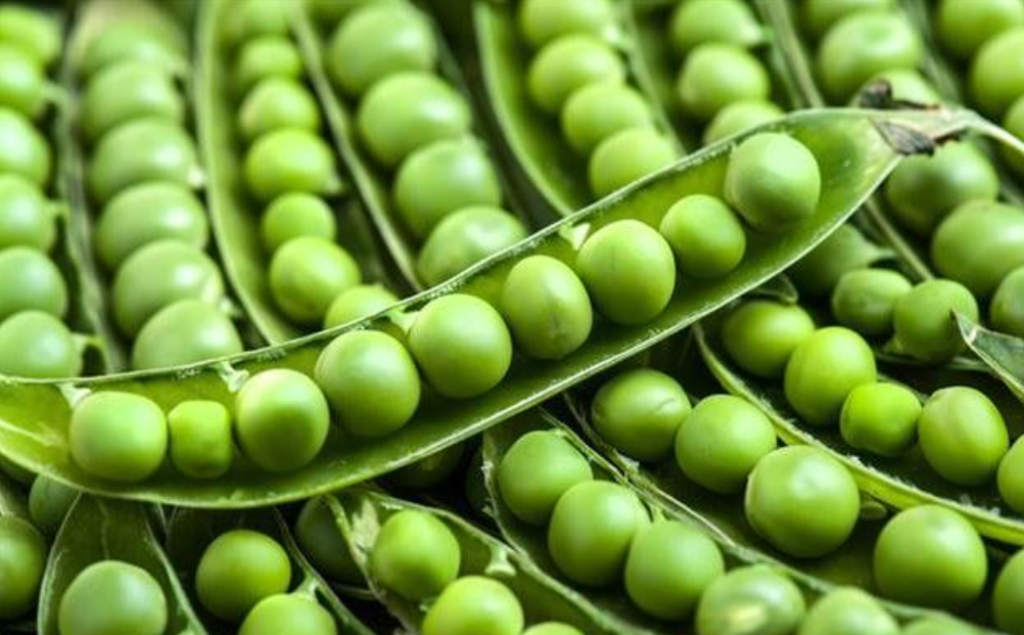
Peas are small, round seeds that are inside the pods produced by the Pisum sativum plant. Pea belongs to the Leguminaceae group and is cultivated in the cool season. Pea is cultivated all around the world and in India, it can be found in the state of Himachal Pradesh, Madhya Pradesh, Rajasthan, West Bengal, Orissa and many more. The green ones are used as vegetables and the dry ones are used as pulses. Peas are a source of vitamins and minerals namely magnesium, thiamine, phosphorus etc. Green peas straw is good source of nutritional fodder for livestock.
Climate requirement:
For pea cultivation, temperature should range between 15 degree to 30 degree Celsius. Optimum rainfall range is between 400 to 500 mm. While harvesting, the temperature should range between 15 to 20 degree Celsius and sowing temperature should range between 25 to 30 degree Celsius.
Soil requirement:
Cultivation can be done on several soil types. Well drained loam soil with a pH level of 6 to 7.5 is optimum for farming of peas. Peas cultivation cannot thrive in water logged areas. Liming is to be done for acidic soil type.
Major Varieties:
Some of the major varieties include Early Bejar, Asauji, Jawahar Matar, Mithi Fali and Arket.

Field arrangement:
Once kharif crop harvest is done, a couple of ploughing along with harrowing is required. Once the ploughing and harrowing process is over, the hard clods are to be softened and proper leveling to be done in the field to avoid water logging problems. Before sowing of seeds, light showers of water is to be done for better germination.
Seed rate and treatment:
A total of 35 to 40 kg of seed is to be used for 1 acre of land.
1 kilo of seeds are to be treated with 3 grams of Captan or Thiram or 2.5 gram of Carbendazim. Once the chemical treatment is over, again treat the seeds with Rhizobium leguminosorum culture emulsified in ten percent of sugar solution. Thorough mixing has to be done with the seeds and should be kept in shade to dry. By doing so you can increase the total yield to more than 10 percent.
Seed sowing:
Sowing has to be completed between the end of October and mid of November for plains and between mid of March till end of May for hills. Broadcasting method can be used for sowing seeds. Spacing wise 30 X 5 cm is maintained for early varieties and 50 X 10 cm for late varieties. Seeds are to be sown at a depth of 3 cm under the soil.
Fertilizer requirements:
Urea and SSP requirement per acre of land is 45 kilos and 155 kilos. And potash requirements will be on soil results.
Nitrogen and Phosphorus requirement per acre of land is 20 kilos and 25 kilos.
While sowing, apply 20kg Nitrogen in form of 50kg Urea and 25kg Phosphorus in form of 150kg Superphosphate per acre. Provide dosage of fertilizer alongside the rows.
Control of weed:
Weeding depends on the variety of pea; either one or two weeding is required. 1st Weeding has to be done, 3 or 4 weeks into the cultivation and 2nd weeding has to be done before flowering. Use 1 liter of Pendimethalin and Besalin for each acre of land. Herbicides can be used within 48 hours of seeds sowing and is considered as a great way of controlling of weed in pea farming.
Irrigation:
Irrigation is required before sowing of seeds for better germination. There is no need for pre sowing irrigation in case soil has enough moisture in it. Once sowing is over, it requires a couple of more times of irrigation. 1st spray is applied before flowering and 2nd is spayed at the pod formation time. Do not water heavily as it can lead to reduction in total yield.
Pest and disease control:
For Pea leaf Miner, apply 300 ml Dimethoate 30EC into 100 liter of water and spray per acre of land. Spray in an interval of 15 days if necessary.
For Pea Thrips and Aphid, apply 400 ml of Dimethoate 30EC into 100 liter of water and spray per acre of land. Spray in an interval of 15 days if necessary.
For Pod borer, apply 900 gram of Carbaryl into 100 liter of water and spray per acre of land. Spray in an interval of 15 days if necessary.
For Powdery mildew disease, apply 2 gram of Wettable sulphur per liter of water or 1 ml of Dinocap per liter of water or 0.5 ml Tridemorph per liter of water and spray three rounds at a 15 days interval.
Harvest and yield:
Harvesting has to be done just before maturity i.e. when the colour changes from black to green. Depending on the variety, harvesting for early variety has to be done between 45 to 60 days, mid season and late season crop has to be done between 75 days and within 100 days.
Yield for early season variety ranges between 35 to 45 quintals per hectare and for mid and late season is between 50 to 65 quintals per hectare.
Post Harvesting:
Storage temperature should be cold to avoid spoilage. Packing can be done in boxes, plastic and wooden baskets etc.
Farmer Earnings:
In current times, a small farmer can earn approximately Rs.1,00,000 per 2.5 acre of land by selling pea both as a vegetable and as seeds. The harvesting is done twice or thrice in a row and also seed production is done by the farmer. Farmer spends approx Rs.5,000 on seed, Rs.10,000 on transportation, Rs.1,000 on irrigation, Rs.2,000 on land preparation and Rs.5,000 for fertilizer. The farmer has to spend an approx value of about Rs.23,000 and can earn upto one lakh rupees in less than four to five months.
References:















